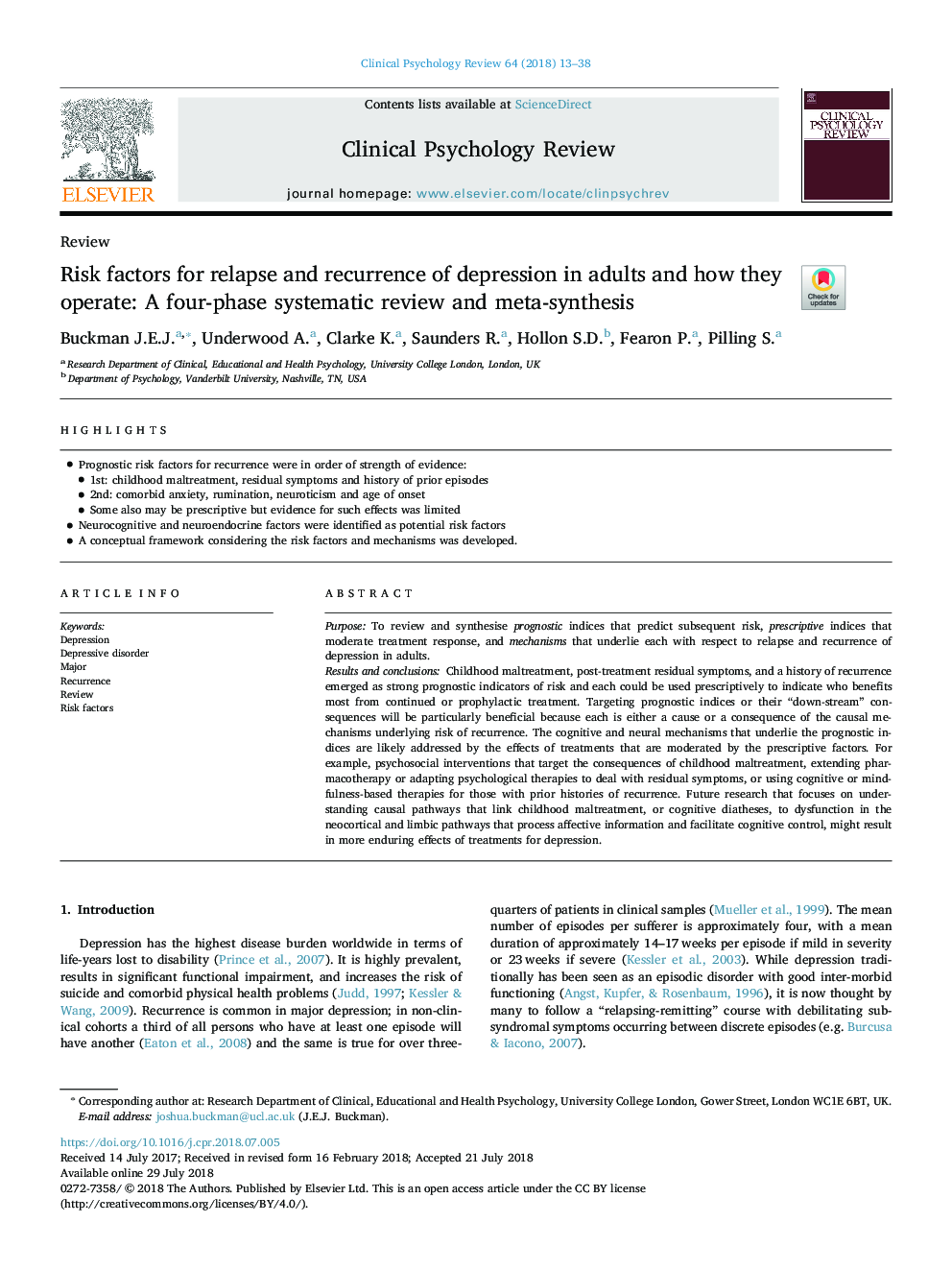| Article ID | Journal | Published Year | Pages | File Type |
|---|---|---|---|---|
| 7263325 | Clinical Psychology Review | 2018 | 26 Pages |
Abstract
Childhood maltreatment, post-treatment residual symptoms, and a history of recurrence emerged as strong prognostic indicators of risk and each could be used prescriptively to indicate who benefits most from continued or prophylactic treatment. Targeting prognostic indices or their “down-stream” consequences will be particularly beneficial because each is either a cause or a consequence of the causal mechanisms underlying risk of recurrence. The cognitive and neural mechanisms that underlie the prognostic indices are likely addressed by the effects of treatments that are moderated by the prescriptive factors. For example, psychosocial interventions that target the consequences of childhood maltreatment, extending pharmacotherapy or adapting psychological therapies to deal with residual symptoms, or using cognitive or mindfulness-based therapies for those with prior histories of recurrence. Future research that focuses on understanding causal pathways that link childhood maltreatment, or cognitive diatheses, to dysfunction in the neocortical and limbic pathways that process affective information and facilitate cognitive control, might result in more enduring effects of treatments for depression.
Related Topics
Health Sciences
Medicine and Dentistry
Psychiatry and Mental Health
Authors
Buckman J.E.J., Underwood A., Clarke K., Saunders R., Hollon S.D., Fearon P., Pilling S.,
